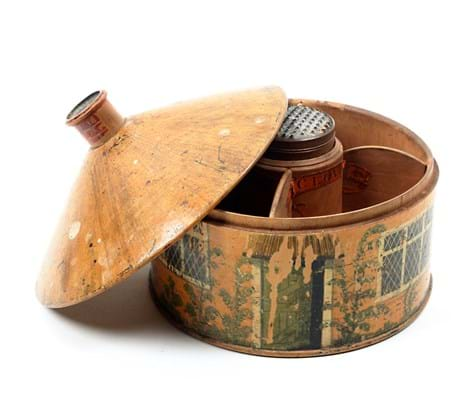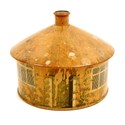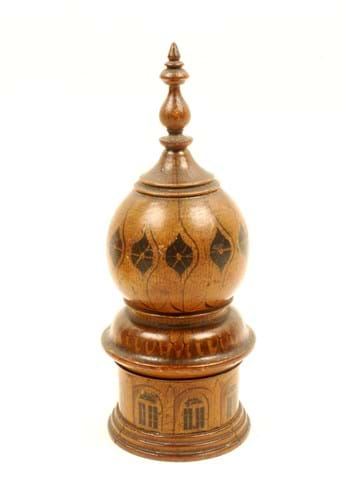The 5½in (14cm) spice box designed in the form of a circular cottage was one of a nine-piece collection of half a dozen rare Tunbridge architectural boxes which in total made in excess of £23,000.
"We have had great success with Tunbridge ware in the past but these delightful boxes influenced by the architecture of Kent and nearby attractions really captured the interest of international collectors,” said auctioneer Robert Bleasdale.
The history of souvenir making in the spa town of Tunbridge Wells dates back to the Stuart period. In 1697, traveller Celia Fiennes (1662-1741) recorded the ”curious wooden ware, which this place is noted for, the delecate, neate and thin ware of wood both white and lignum vitae”.
True to these roots, early 19th century Tunbridge ware is relatively simple: lathe-turned vessels painted or decorated with relatively plain geometric marquetry inlay and penwork rather than the tessellated mosaic inlay that became a staple of the Victorian period. “There are many collectors who like the naivety of these earlier pieces, they have a charm of their own,” added Bleasdale.
Of particular importance to the performance of the thatched cottage box was the presence to the interior of a steel nutmeg grater. A committed collector of nutmeg graters who is currently penning a book on the subject proved to be the underbidder following a contest with another UK buyer.
He did, however, win a similar 7½in (19cm) high box c.1820 in the form of a Brighton Pavilion minaret tower painted with pairs of arched windows. Also including a nutmeg grater, it sold at £5000 (estimate £1000-1500).
The sale took place on July 27 and the buyer’s premium was 20%.










